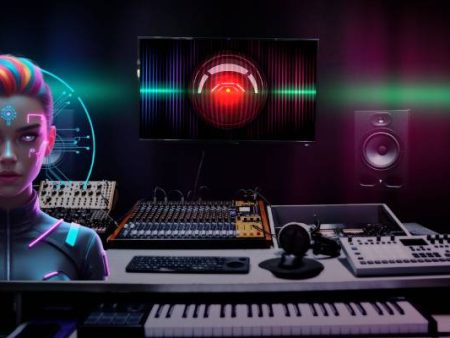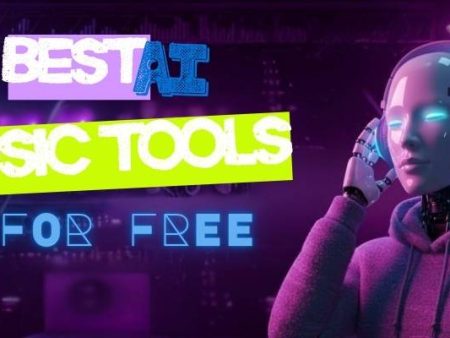The first time I listened to a fully AI-generated piano piece, I paused, almost instinctively waiting for the human element to break through—a slip of timing, a subtle rubato, maybe even a wrong note that made it oddly right. But the track was perfect.
Too perfect. And I couldn’t help but ask myself: is this what music will sound like when algorithms run the show?
This is the question haunting musicians, producers, and even casual listeners: can AI capture human emotion in music? It’s not just technical curiosity—it’s existential.
Music has always been the language of feeling, the way we grieve, celebrate, protest, or remember. If a machine can simulate that language, does it matter whether it ever felt anything at all?
That tension—between awe and unease—is exactly what I want to unpack here.
From Mozart to Machine: How We Got Here
Music’s history is inseparable from technology. The harpsichord gave way to the piano, shocking audiences with its dynamic range.
Radio changed how songs were shared, then recording made performances eternal. Later, synthesizers in the 1970s and digital audio workstations in the 2000s pushed boundaries further.
And now, we’re here: from Mozart to machine: where algorithms aren’t just tools but creators.
Companies like Aiva, Amper, and OpenAI’s Jukebox have shown that machines can produce tracks that mimic Beethoven, The Beatles, or modern pop. Some of these pieces are eerily convincing.
But history shows us something important. Each wave of technology hasn’t killed music; it’s expanded it. So the real question isn’t whether machines can compose—it’s whether they can make us feel.
The Science: How AI “Understands” Emotion in Music
At its core, AI doesn’t feel. It predicts. When AI generates music, it analyzes enormous datasets of existing songs—patterns of chords, tempo, melody, timbre—and associates them with emotional tags.
For example:
- Major chords + faster tempo = “happy” or “uplifting.”
- Minor chords + slower tempo + sparse instrumentation = “sad” or “reflective.”
- Heavy percussion + distorted guitar = “aggressive” or “powerful.”
AI then recombines these patterns into new outputs that sound emotional, even if the machine has no subjective experience of sadness or joy.
A 2023 MIT study found that listeners misattributed 40% of AI-generated classical pieces as being written by humans.
That means machines are learning how to mimic the external markers of emotion well enough to trick us—at least sometimes.
But does imitation equal authenticity? That’s where things get complicated.
The Human Factor: Why Emotion in Music Feels Different
When Adele sings about heartbreak, or Coltrane’s saxophone wails through a solo, what moves us isn’t just the notes. It’s the knowledge that those sounds came from lived experience—loss, love, frustration, triumph.
AI can mimic the sound of heartbreak, but it doesn’t know heartbreak. It can’t sit alone at 2 a.m. replaying a memory.
It can’t fight with a bandmate, patch it up, and translate the tension into an electric guitar riff.
This is where the doubt creeps in for me. Emotional resonance isn’t just in the composition; it’s in the imperfections. The voice cracking, the drummer rushing slightly ahead of the beat.
AI, by design, often irons out these imperfections. And in doing so, it risks losing the spark that makes music profoundly human.
The Future of Songwriting: Human, Machine, or Both?
Looking ahead, I don’t believe machines will replace songwriters. Instead, I see the future of songwriting: as hybrid.
AI will handle structural heavy lifting—chord progressions, backing tracks, style emulation—while humans infuse narrative, vulnerability, and imperfection.
Consider this: AI can write a melody in the style of Billie Eilish. But it can’t recall what it felt like for her to write “when the party’s over” after a breakup. That story, that memory, is still uniquely human.
But in collaboration, something powerful emerges. Songwriters can use AI as a partner for brainstorming, pushing creative boundaries, or breaking through writer’s block. It doesn’t diminish the art; it amplifies it.
Case Studies: Where AI Music Already Lives Among Us
- Endel creates personalized, AI-driven soundscapes to help people sleep, focus, or relax. In 2019, it signed a distribution deal with Warner Music Group.
- Aiva has composed symphonies performed by orchestras and is used in film scoring.
- Boomy allows anyone to generate and upload songs to Spotify within minutes—users have collectively created millions of tracks.
- OpenAI Jukebox can produce raw audio in the style of famous artists, sometimes nearly indistinguishable.
In some corners, AI-generated music is already invisible. You’ve likely heard it in ads, waiting rooms, or background playlists without even knowing.
Step-by-Step Guide: How to Use AI Music Tools Without Losing Soul
If you’re a musician, producer, or even just curious, here’s a step-by-step guide: how to integrate AI into your workflow while keeping authenticity intact:
- Experiment First, Judge Later
- Try tools like Boomy, Soundraw, or Aiva. Don’t dismiss them immediately—see what surprises you.
- Use AI for Structure, Not Story
- Let it generate chord progressions or backing beats, but write your own lyrics and melodies rooted in your experiences.
- Embrace Imperfections
- If the AI output feels too polished, add your own quirks: a live guitar riff, a shaky vocal, an unexpected key change.
- Be Transparent
- If you use AI, admit it. Audiences often respect honesty more than illusion.
- Think of It as a Collaborator
- Don’t ask AI to “replace” you. Ask it to “inspire” you. The difference in mindset changes the output entirely.
The Emotional Divide: Listener Perceptions
Listeners are split. A 2024 Statista survey showed that while 58% of consumers said they would listen to AI-generated background music, only 26% believed AI could write “authentic” songs that replace human artists.
That tells me something critical: people are comfortable with AI when the stakes are low (a playlist at the gym, ambient study music), but when it comes to emotionally charged songs—weddings, funerals, personal anthems—they still crave human touch.
Top Free AI Music Tools in 2025
If you’re curious but hesitant to invest, here are some top free AI music tools worth exploring:
- Boomy: Generate full songs and even publish them to platforms.
- Soundraw (limited free tier): Create customizable instrumental tracks.
- Ecrett Music: Simple interface for background tracks.
- Amper (trial): Royalty-free music creation for content.
Free tools won’t give you the professional polish of paid platforms like Aiva, but they’re perfect for experimentation.
My Personal Reflection: Between Wonder and Worry
I’ll admit, I’m conflicted. On one hand, I marvel at the creativity these tools unleash. They democratize music, giving anyone—even those without training—the ability to express themselves. That’s beautiful.
But I also worry. I worry about music losing its edge, about everything sounding too similar, about younger generations not experiencing the raw humanity of live mistakes that become magic.
And yet, I know this: technology has never stopped art. It reshapes it. The printing press didn’t kill poetry.
Photography didn’t kill painting. Synthesizers didn’t kill acoustic guitars. Maybe AI won’t kill music either. Maybe it’ll push us to ask better questions about what emotion in art really means.
Conclusion: Can AI Really Capture Human Emotion?
So, can AI capture human emotion in music? My answer is: it can simulate, but not originate. It can mirror emotion with surprising skill, but the depth still comes from us.
Maybe that’s enough. Maybe what matters isn’t whether the machine feels, but whether we feel something when we listen.
And perhaps that’s the true future of AI music—not replacing the soul of musicianship, but amplifying it, challenging it, and reminding us of what makes us human in the first place.


